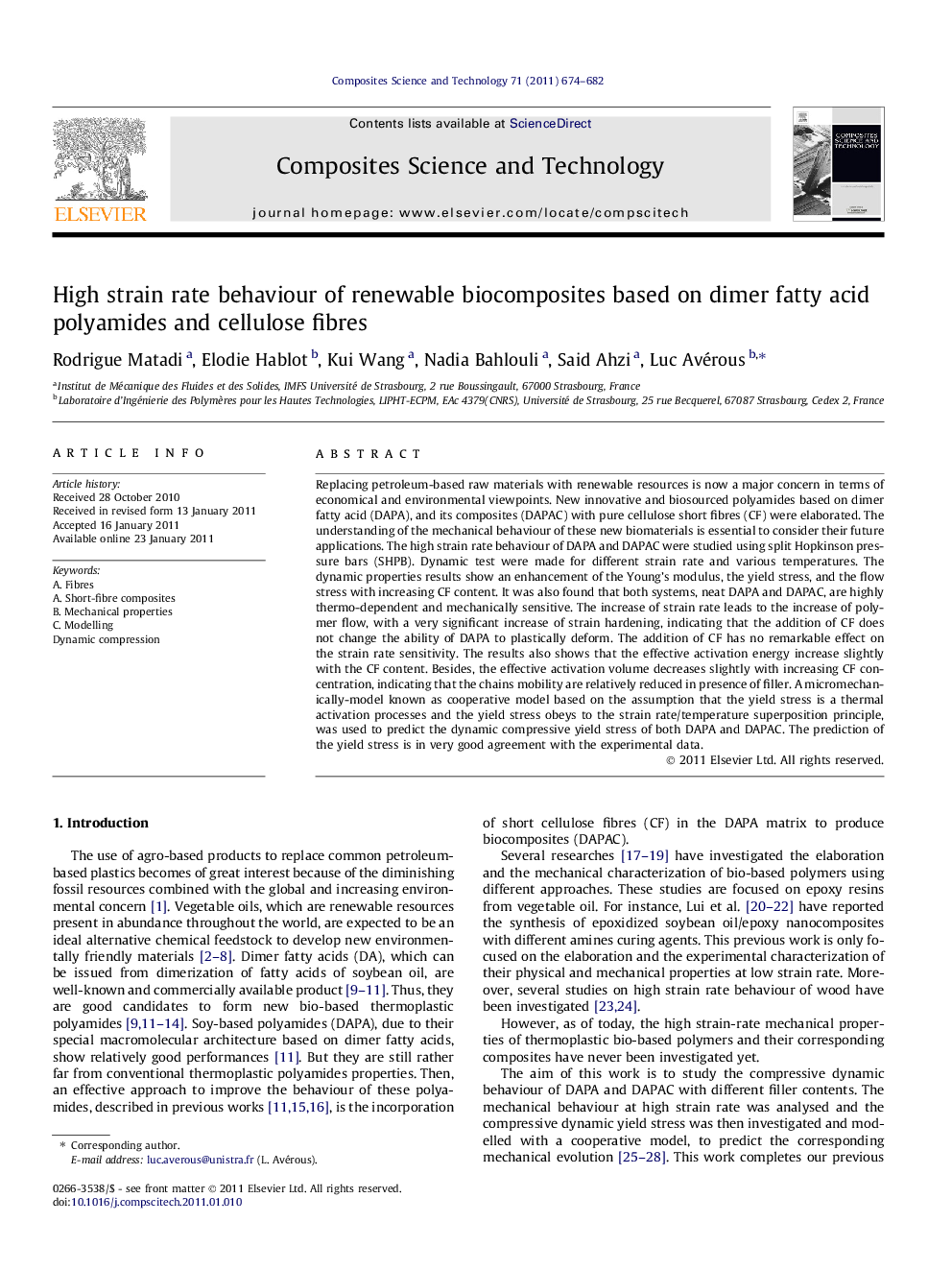| کد مقاله | کد نشریه | سال انتشار | مقاله انگلیسی | نسخه تمام متن |
|---|---|---|---|---|
| 821111 | 906742 | 2011 | 9 صفحه PDF | دانلود رایگان |

Replacing petroleum-based raw materials with renewable resources is now a major concern in terms of economical and environmental viewpoints. New innovative and biosourced polyamides based on dimer fatty acid (DAPA), and its composites (DAPAC) with pure cellulose short fibres (CF) were elaborated. The understanding of the mechanical behaviour of these new biomaterials is essential to consider their future applications. The high strain rate behaviour of DAPA and DAPAC were studied using split Hopkinson pressure bars (SHPB). Dynamic test were made for different strain rate and various temperatures. The dynamic properties results show an enhancement of the Young’s modulus, the yield stress, and the flow stress with increasing CF content. It was also found that both systems, neat DAPA and DAPAC, are highly thermo-dependent and mechanically sensitive. The increase of strain rate leads to the increase of polymer flow, with a very significant increase of strain hardening, indicating that the addition of CF does not change the ability of DAPA to plastically deform. The addition of CF has no remarkable effect on the strain rate sensitivity. The results also shows that the effective activation energy increase slightly with the CF content. Besides, the effective activation volume decreases slightly with increasing CF concentration, indicating that the chains mobility are relatively reduced in presence of filler. A micromechanically-model known as cooperative model based on the assumption that the yield stress is a thermal activation processes and the yield stress obeys to the strain rate/temperature superposition principle, was used to predict the dynamic compressive yield stress of both DAPA and DAPAC. The prediction of the yield stress is in very good agreement with the experimental data.
Journal: Composites Science and Technology - Volume 71, Issue 5, 22 March 2011, Pages 674–682